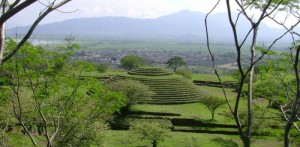The Spatial Turn continues to transform understandings of space and human activity in many contexts, from broad strokes to nuances. Mapping and visualization tools facilitate the analysis of movement and phenomena in two and three dimensions, and from many perspectives, while innovations in teaching and technology make spatial concerns accessible to students and to (some) sectors of the public. In many cases, though, space is not problematized. As the Spatial Turn and the Spatial Humanities forge new frontiers, let’s consider these and other issues:
• Considering the diverse U.S. populace, should we introduce alternate philosophies/mapping traditions outside of European traditions?
• How do language, philosophy, and space intersect, and how can these phenomena be mapped? (In my own work, the Yucatec Maya language features deicitic time in which cyclical time is stressed at the expense of sequential time, and this affects notions of movement; some settlements in the Southwest U.S.-West Mexico are planned to be intervisible and interaudible–how can these phenomena be expressed visually?
• How can the ideas of theoreticians of space–W. Benjamin, Foucault, Bourdieu, Deleuze, J. Butler–be expressed visually?
• Share your success (or non-success) stories about spatiality and mapping in your teaching and research.
Meta
Search
-
Recent Posts
More Posts
Tags
THATCamp on Twitter




